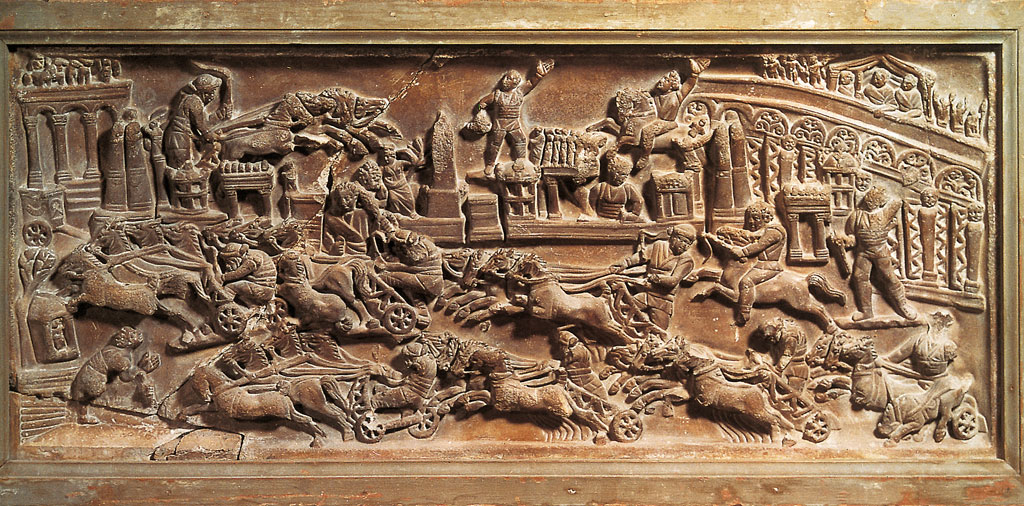The Auriga

Even in the V century A.D. the auriga were heroes beloved by the people and by powerful of Rome so that the Roman emperor of the of the Orient did depict the charioteer Porfirio on the base of one columns of spine of ByzantiumCircus built by Constantine.
The Auriga were the heroes of the Ludi Circensian even before they were introduced Ludi Gladiators. The Ludi Circensian were always the most beloved games in ancient Rome, The legend tells that they were instituted by Romulus to the Consualia feast but chariot races were very popular already among the Greeks and the Etruscans, from which the Romans borrowed, and they were related to Pelops myth and to chariot race organized by Oenomaus that saw him winner and new king of the land that from him took the name of Peloponnesus.
The chariot races since the time of the kings took place in the Circus Maximus, the largest circus stable of empire, but some chariot races with three horses and horses ridden by men ran in other circuses and first one in Rome to have fixed character was the Flaminius Circus, in the eastern part of the Campus Martius.
Chariot races were held in relation to particular religious feasts usually, and you had to respect a ceremonial very precise: it began with a solemn procession (pump) that made the rounds of the circus around the spine and where you did the sacrifices to the gods, ultimately the factiones entered into the circus. The races could be of Chariot of two, three, four, even more horses but the teams were four: factio albata (white), factio russata (red), factio prasina (Green), factio veneta (blue). Each faction was composed not only from the chariot and his horses, but it was a real team with all the men who took care of the horse and its preparation as well as the charioteer.
The Auriga was entrusted with valuable species horses bred exclusivelyfor u se in racing and in Rome there were structures designed to host the teams in the days when they had to compete in the circus.
These buildings sayings Stabula were available to horses but also to the entire team that supported the charioteer as is confirmed by a passage in Plutarch:
Praesina factionis ita addictus et deditus, ut coenaret in stabulo assidue et maneret.
For large celebrations of Ludi Saeculares of 17 BC Augustus asked Marcus Agrippa to build structures that could accommodate horses and riders in the western side of the Field of Mars behind the Navalia, not far from what was left of the Circo Flaminius - probably used for training exercises daily - and where you could easily reach the Circus Maximus who had carceres just beyond the Forum Boarium ...
Sign up and read the rest of the article!
by M.L. ©ALL RIGHTS RESERVED (Ed 1.2 - 26/03/2018)






